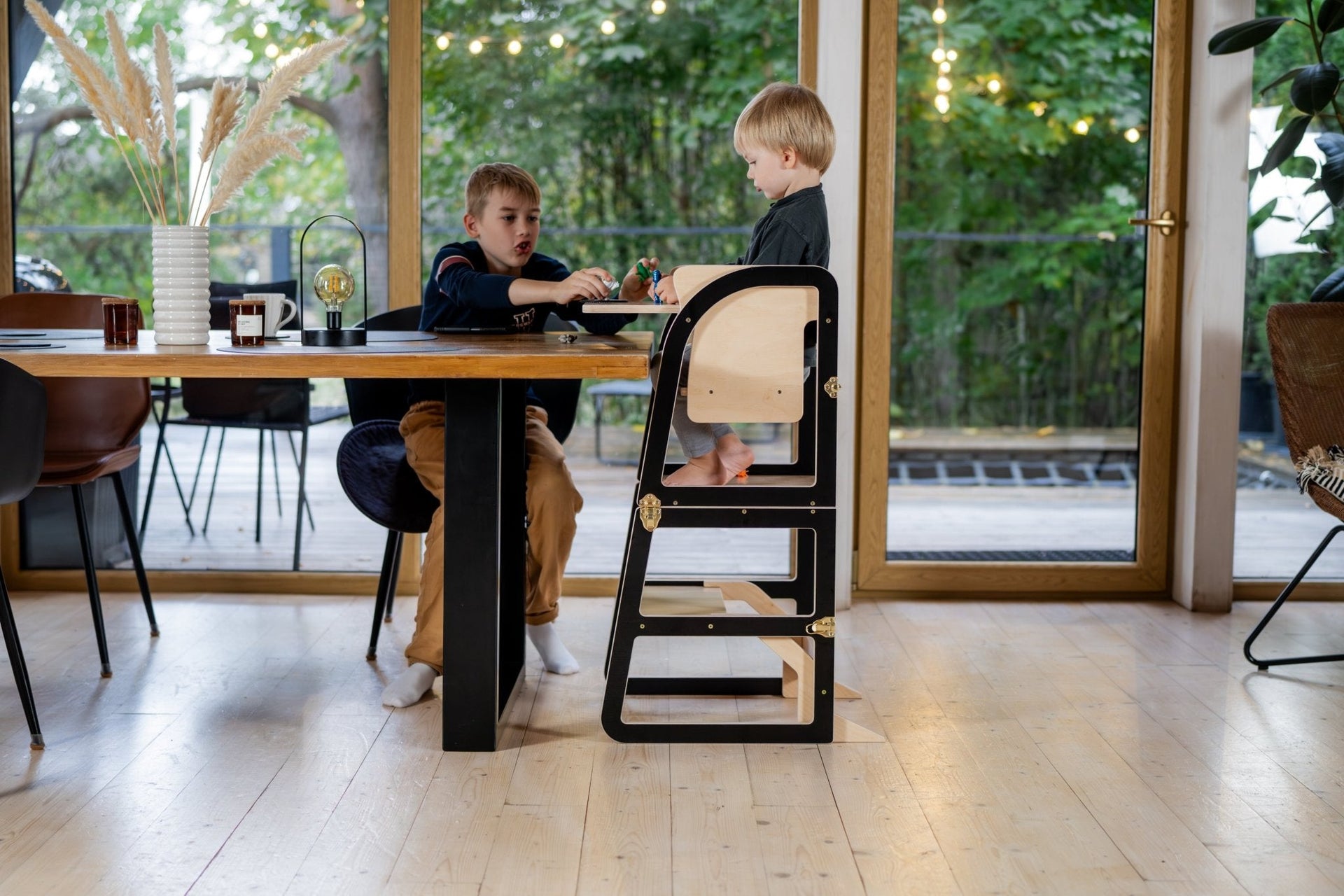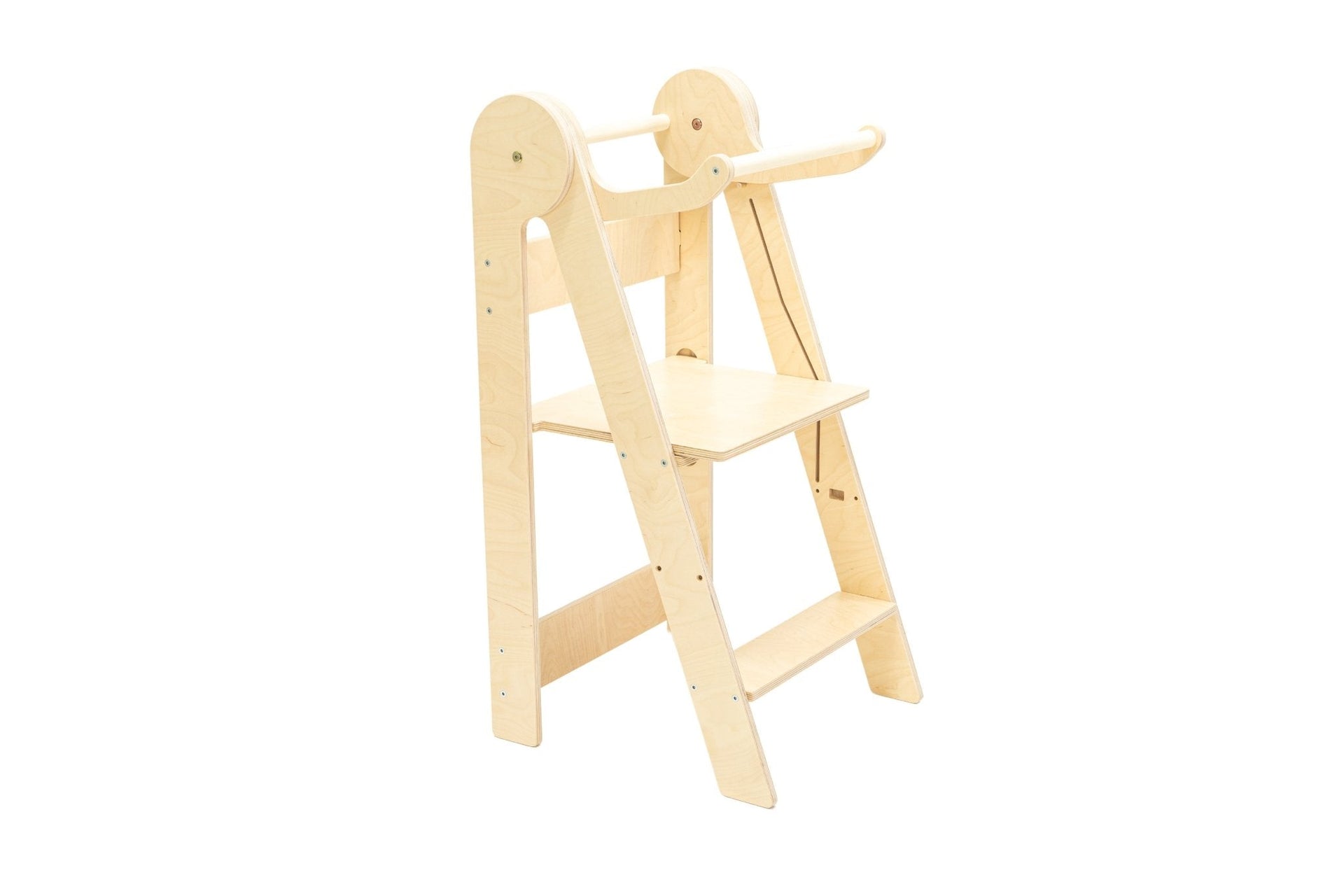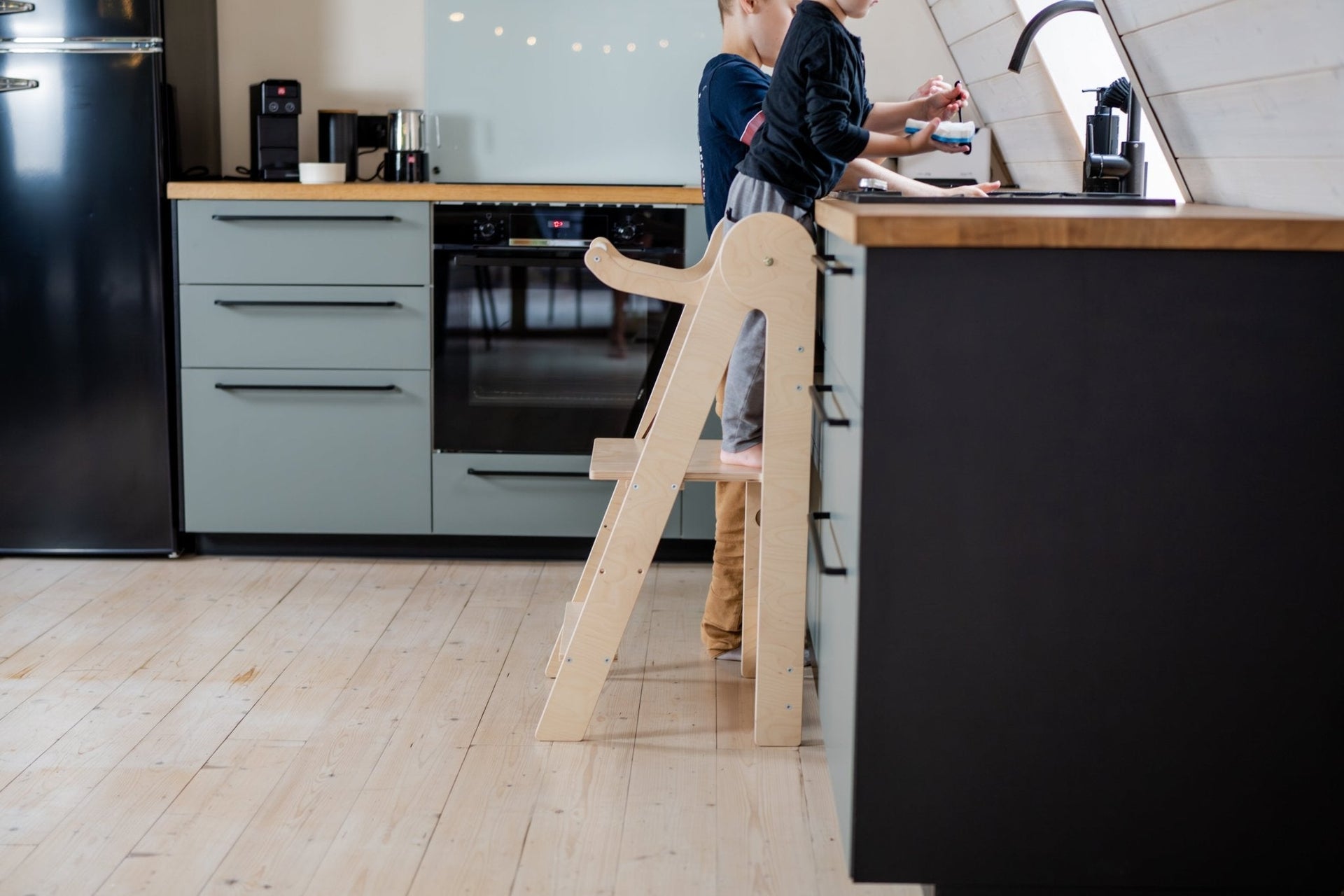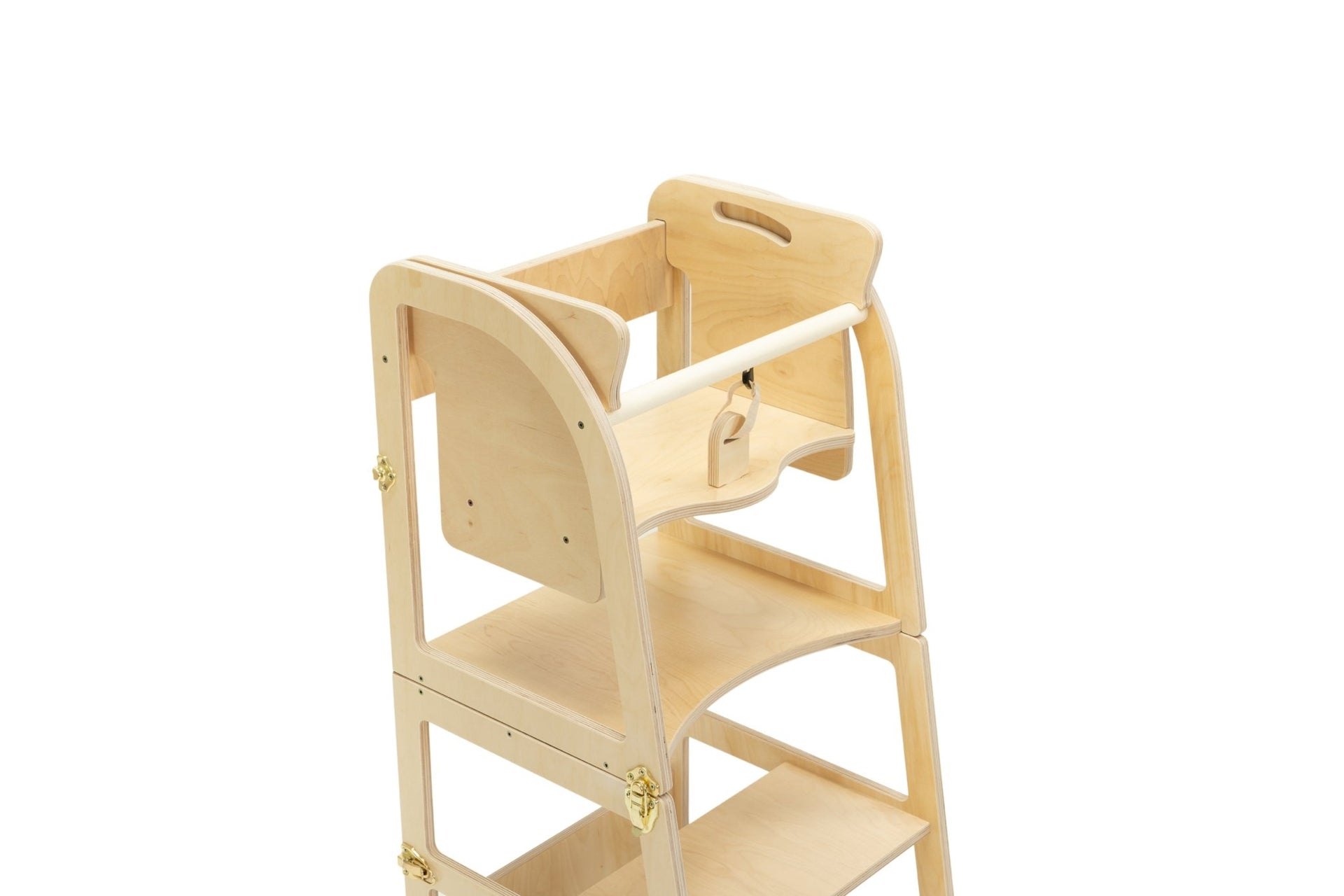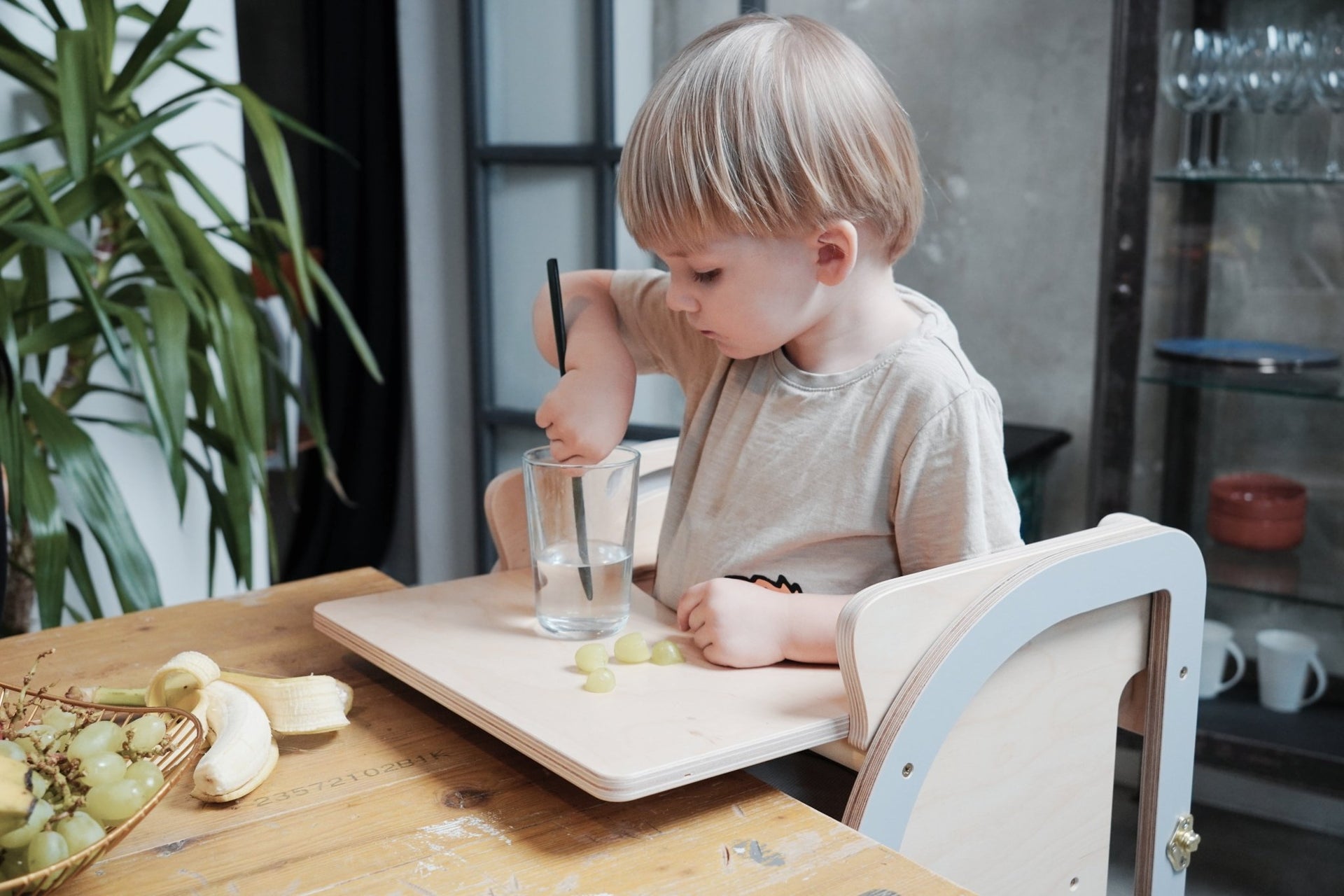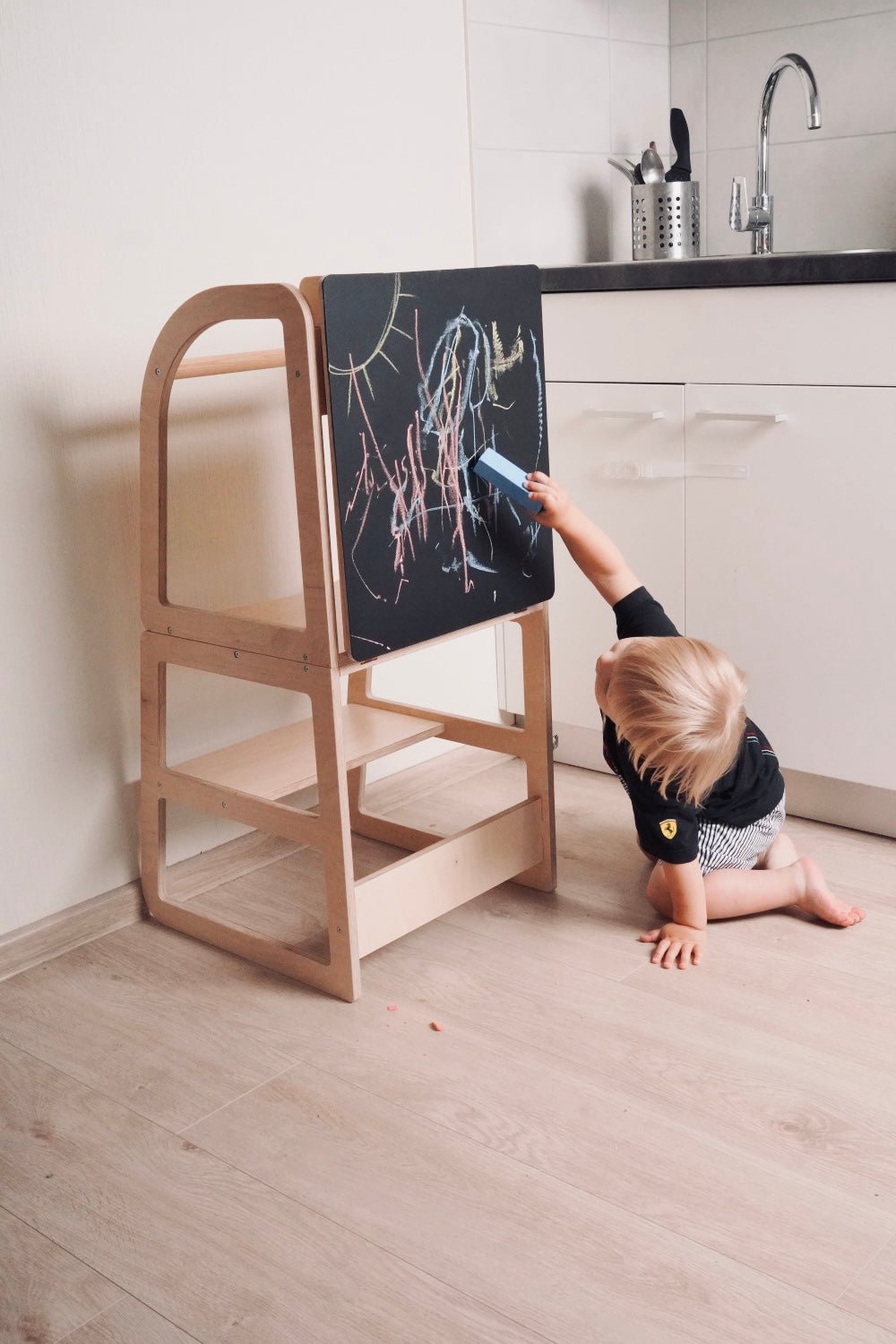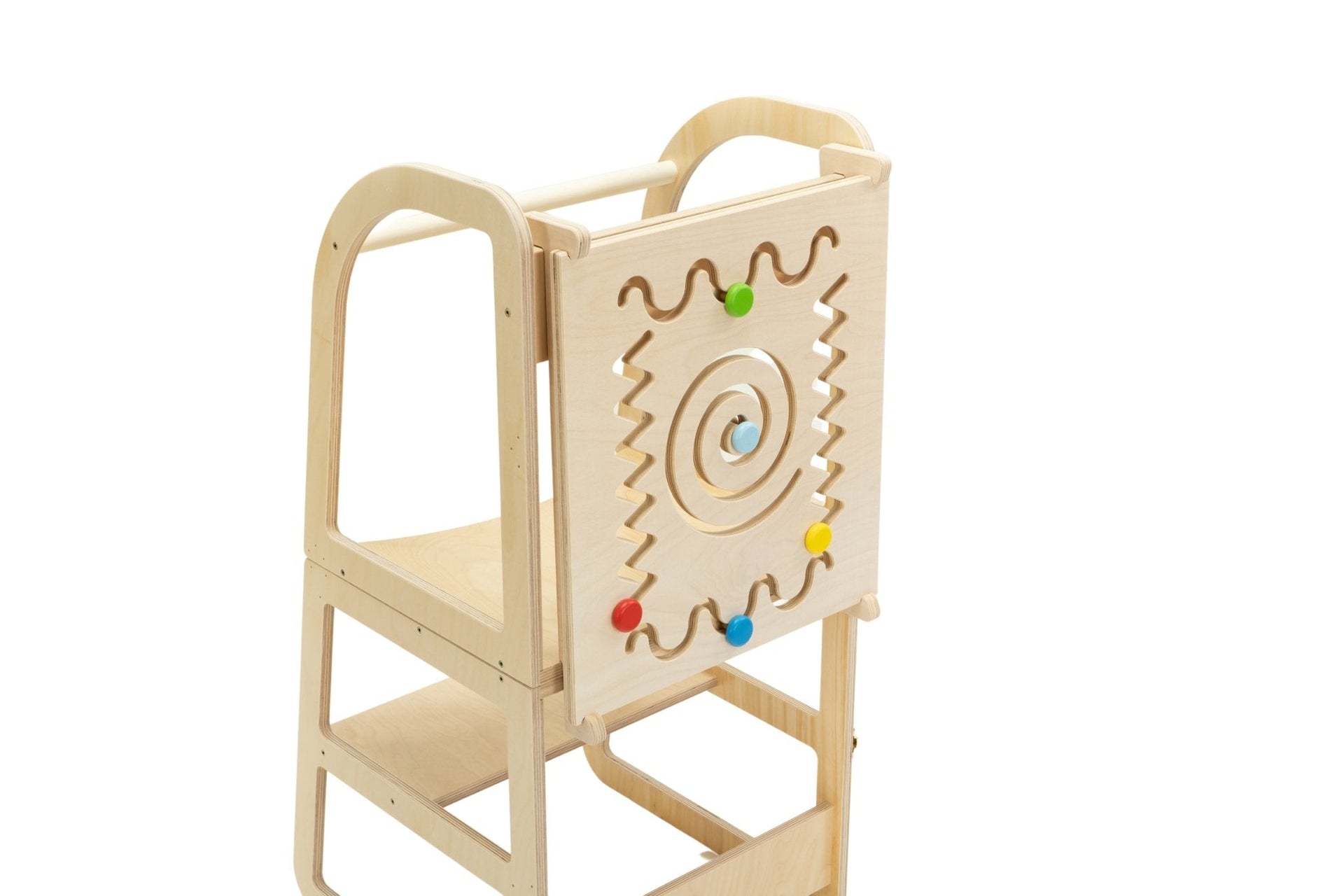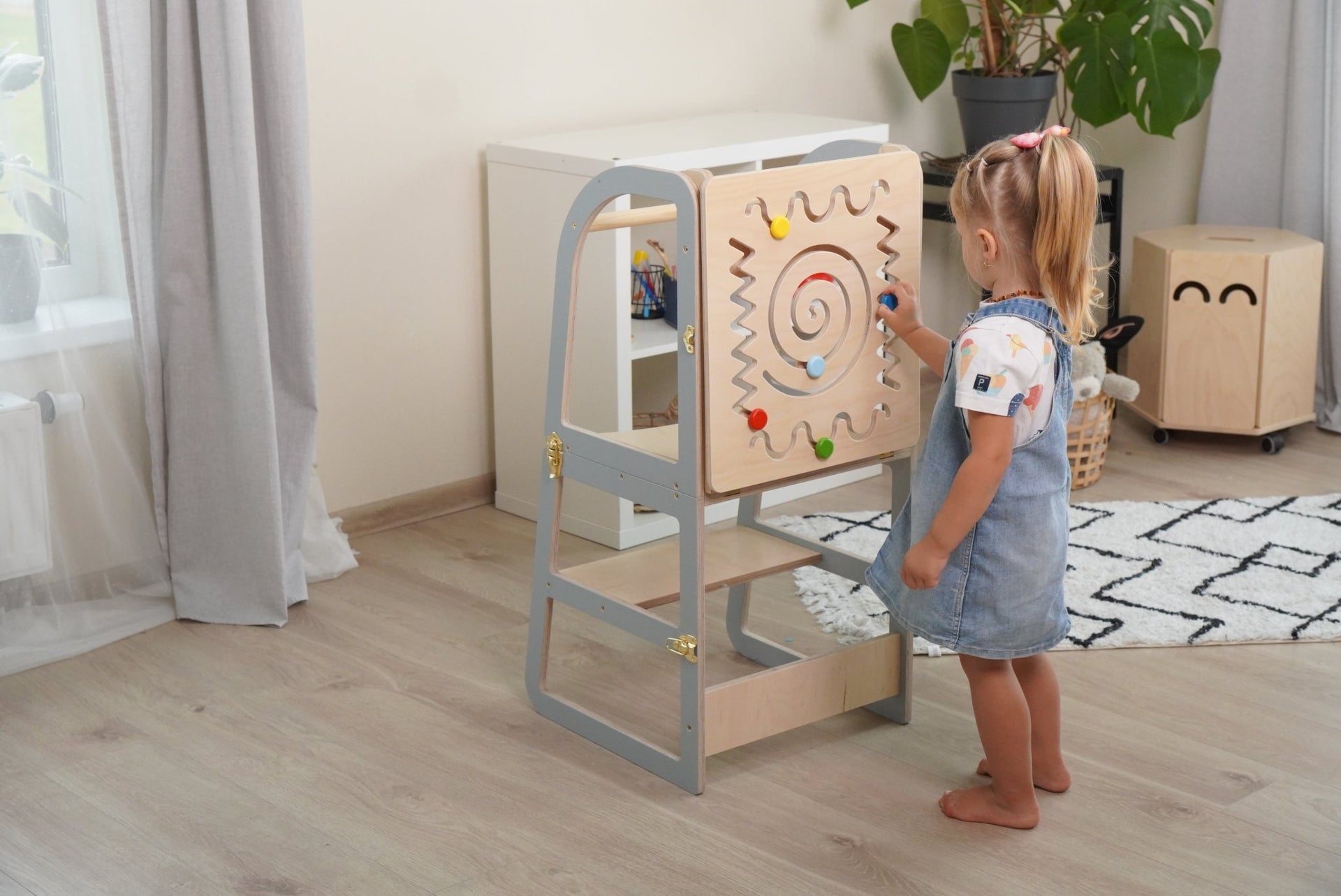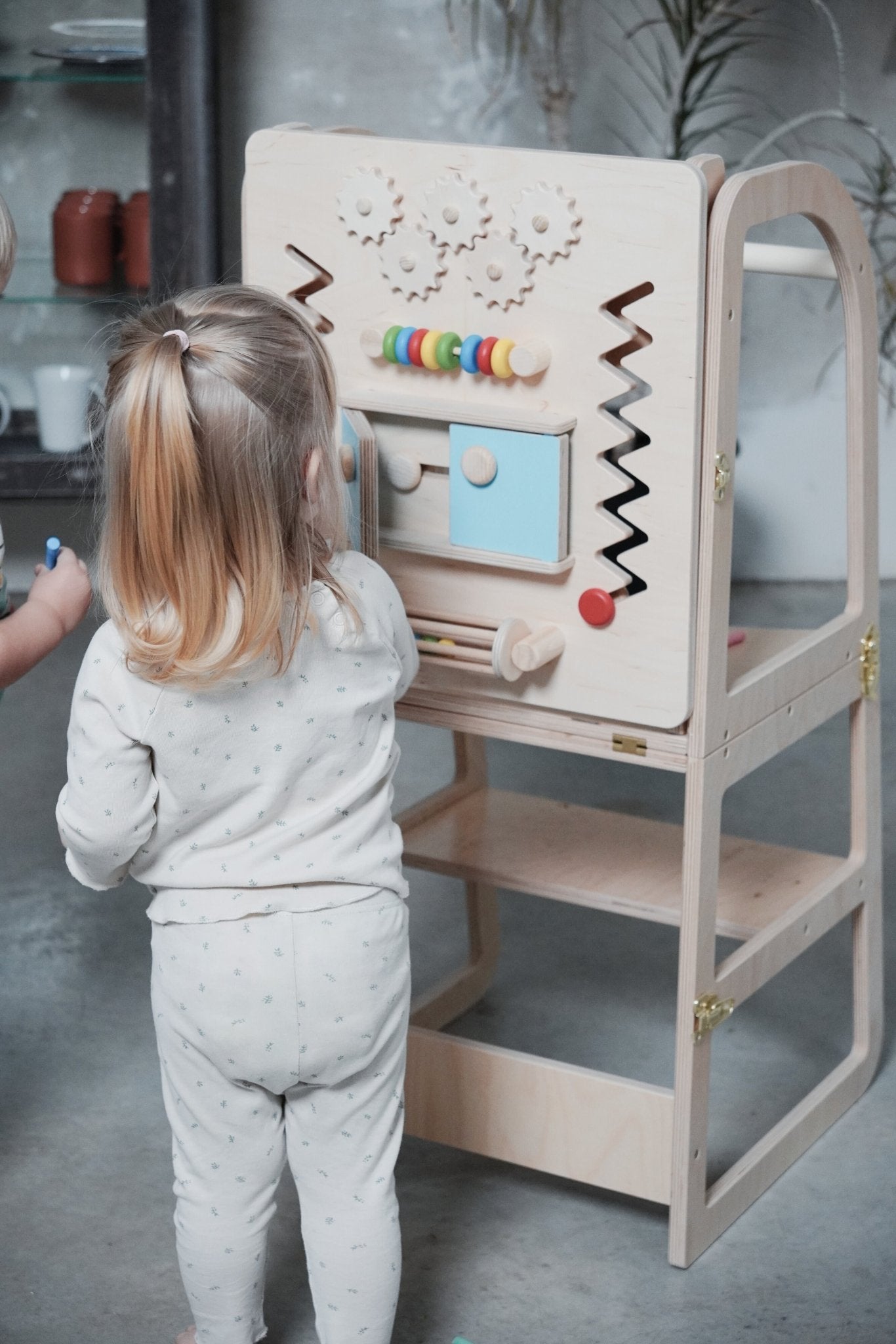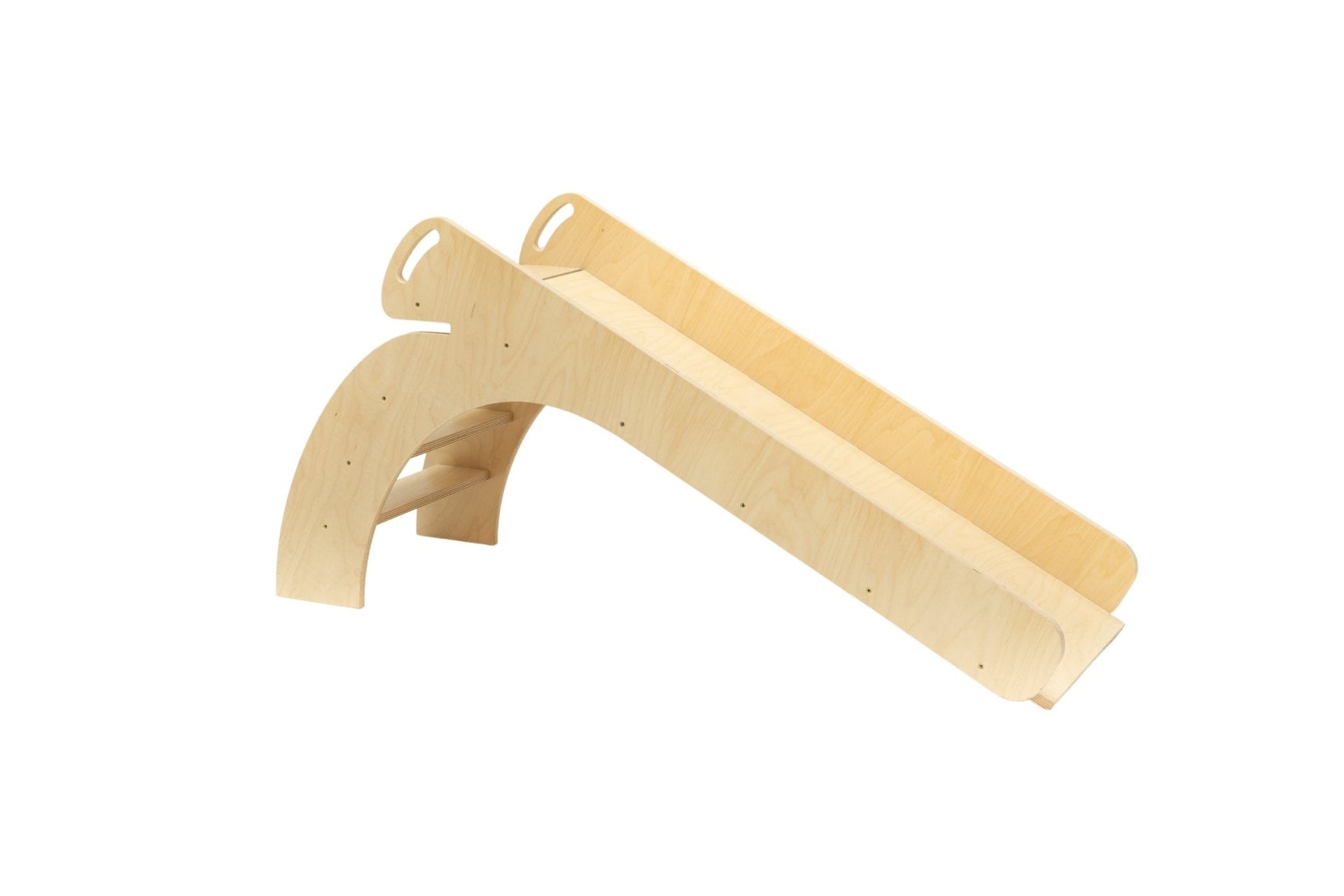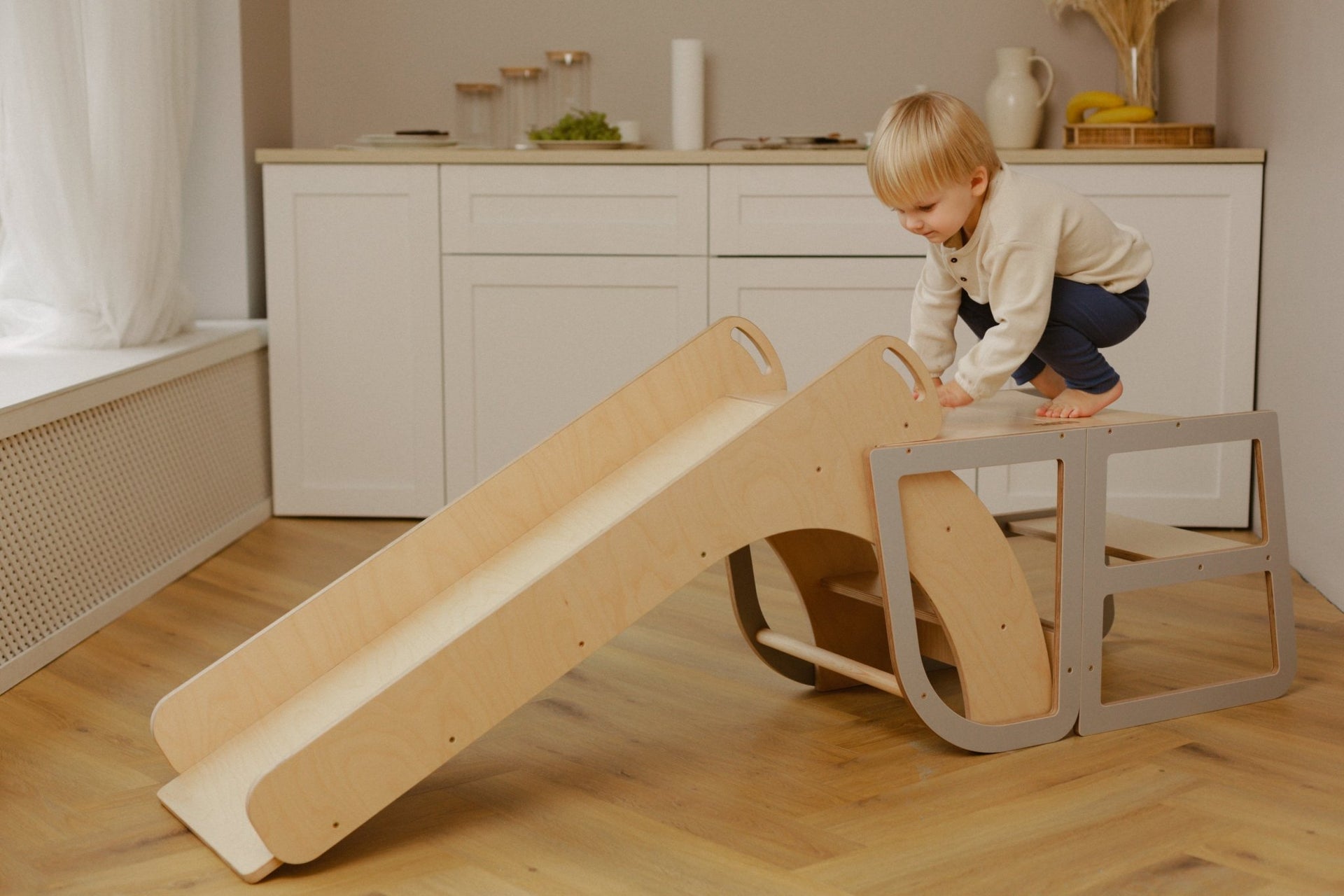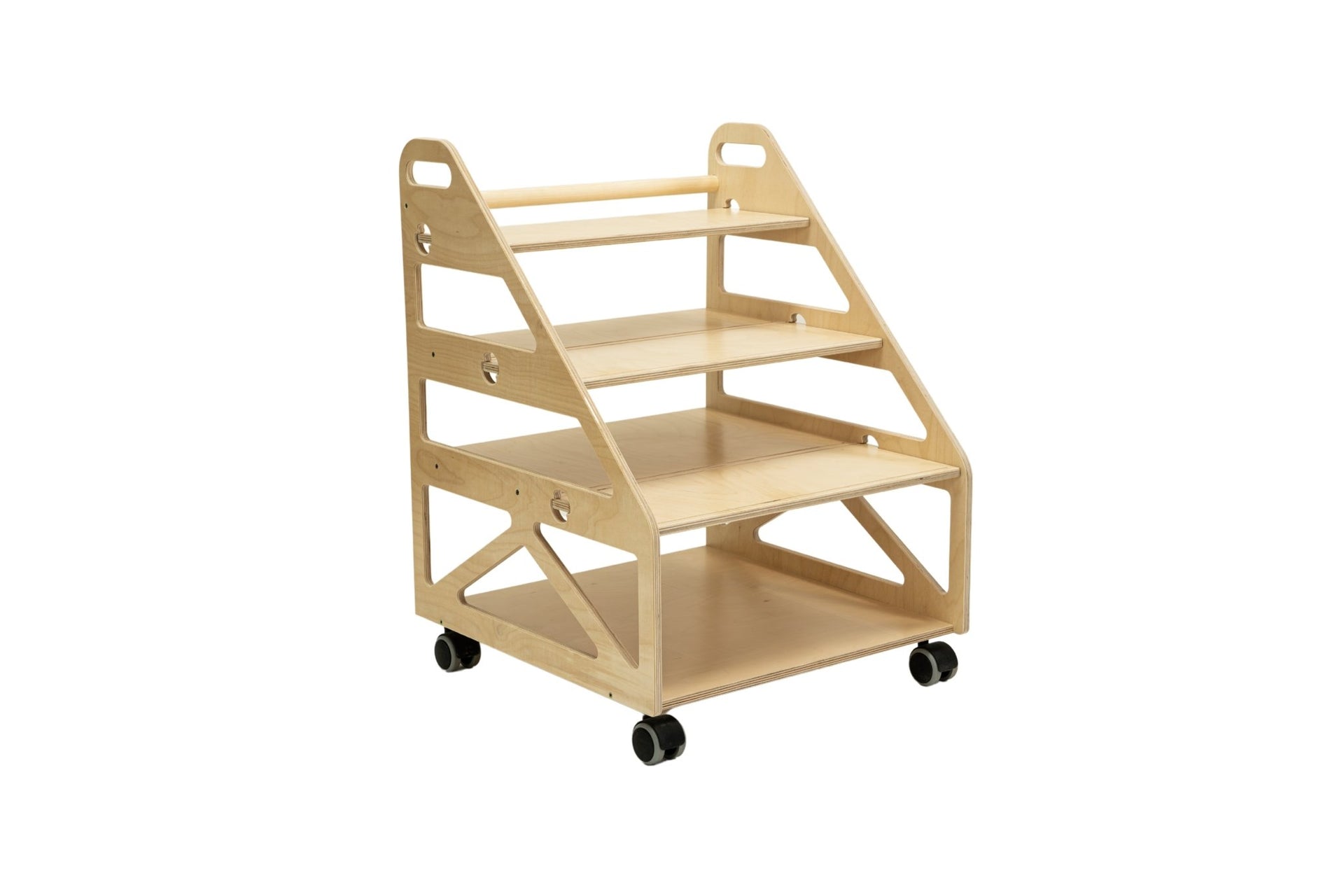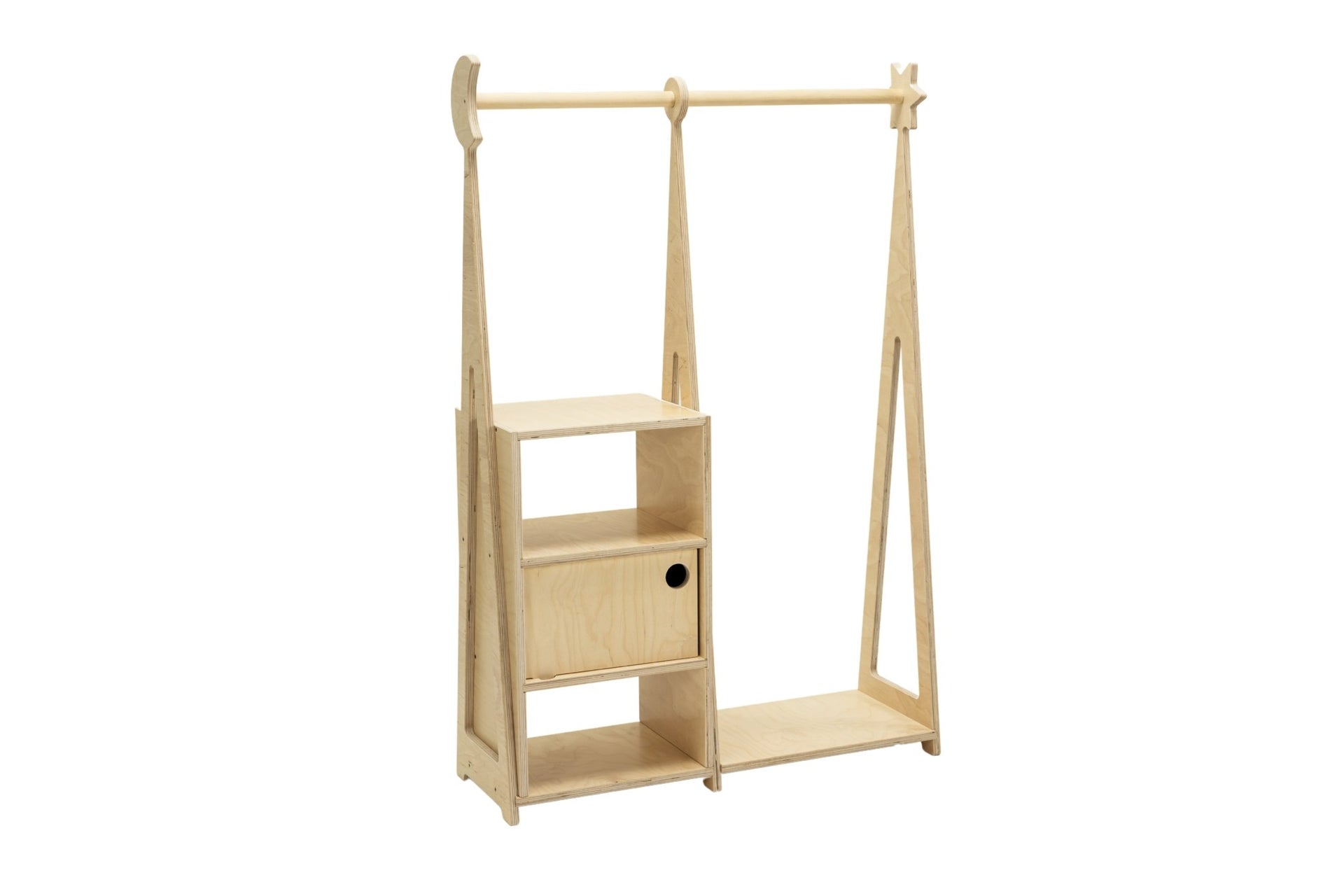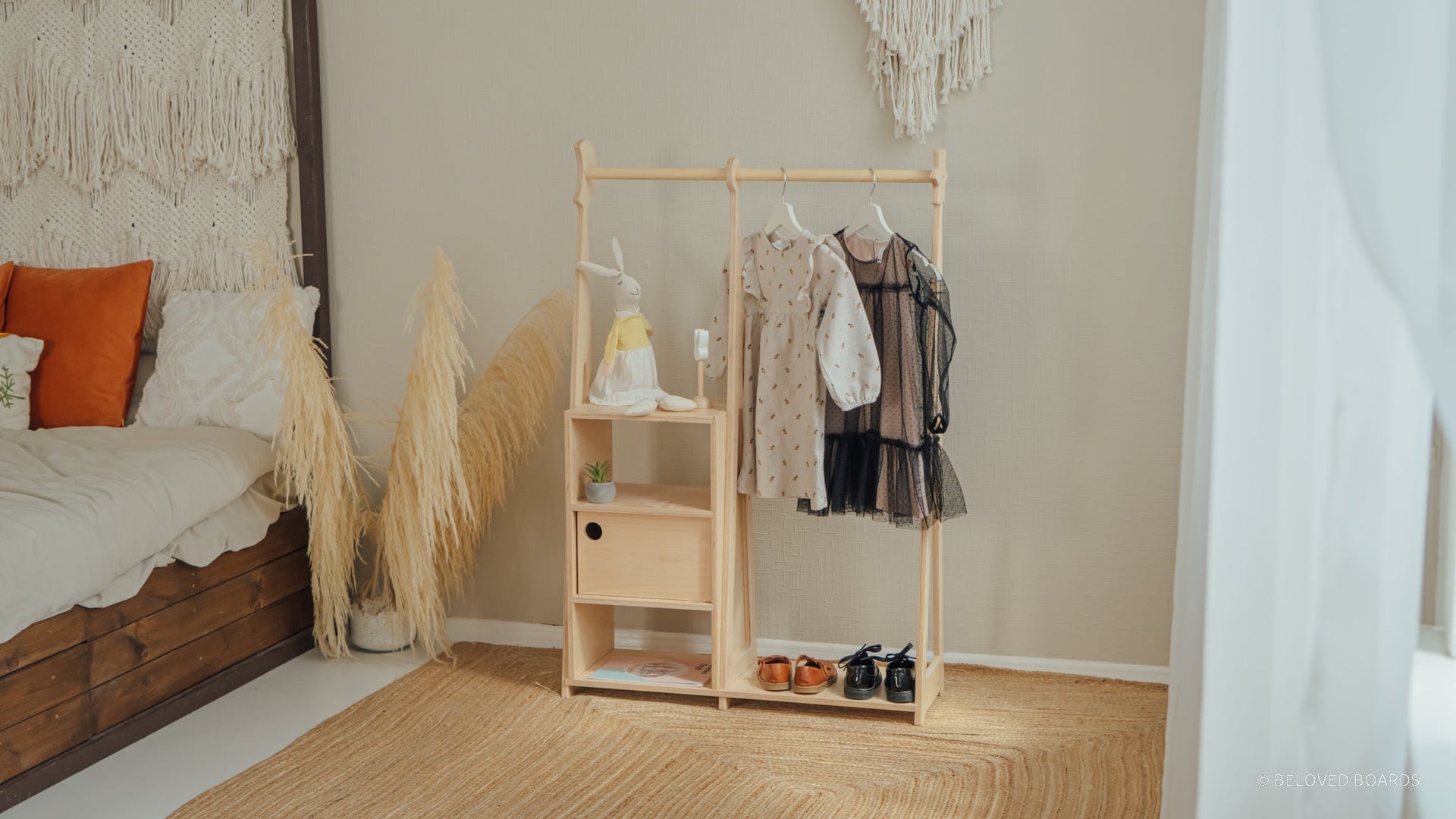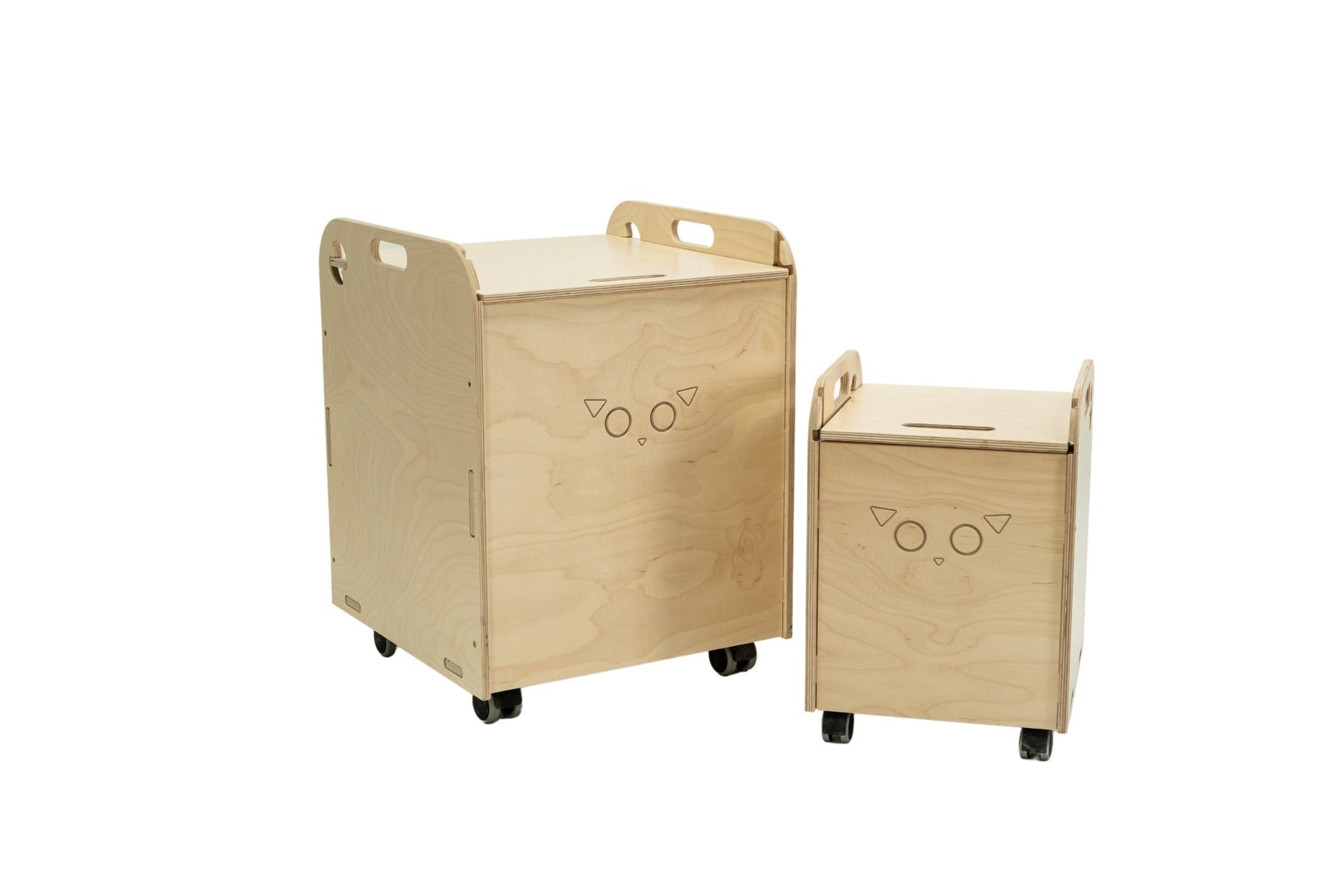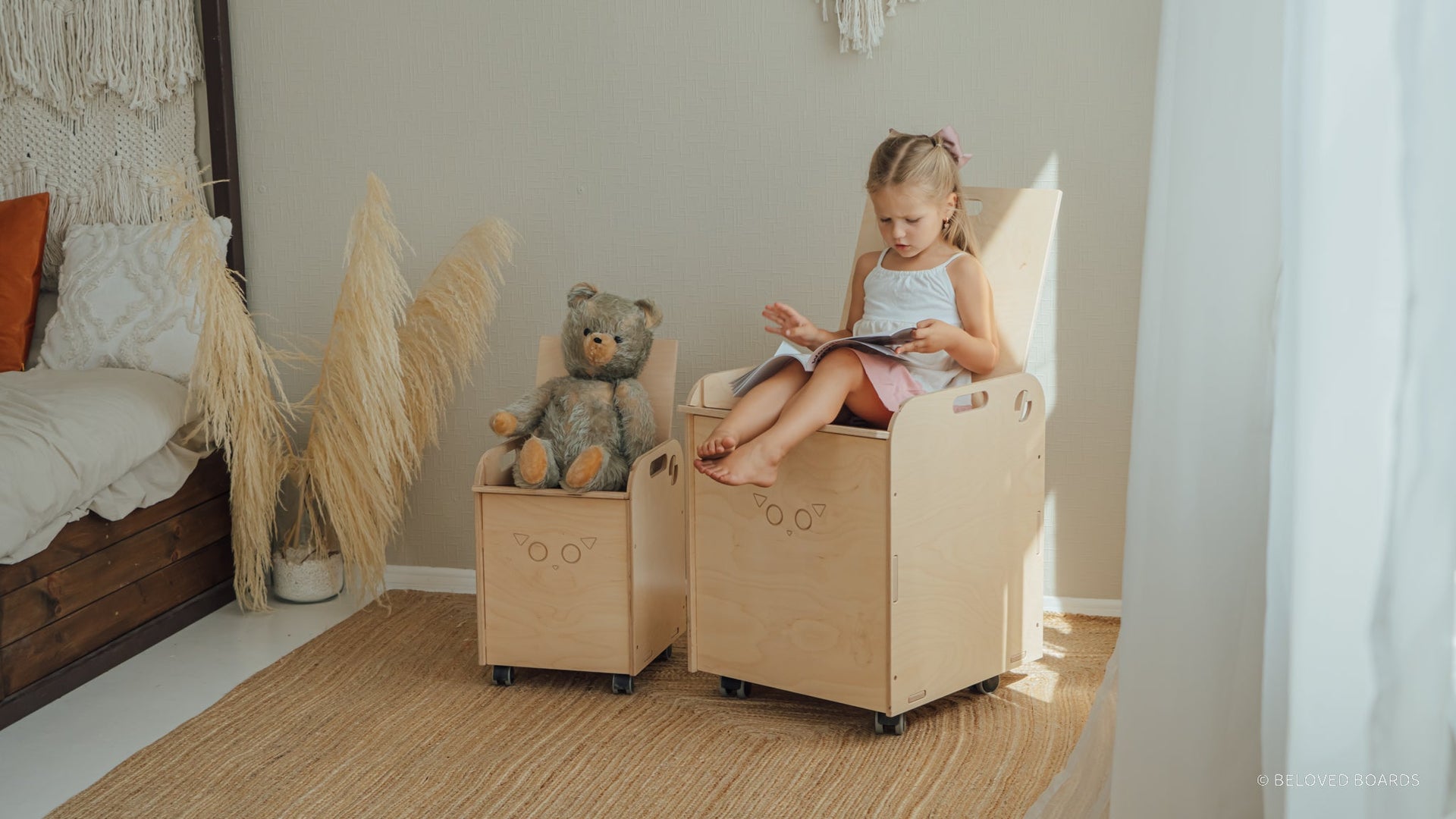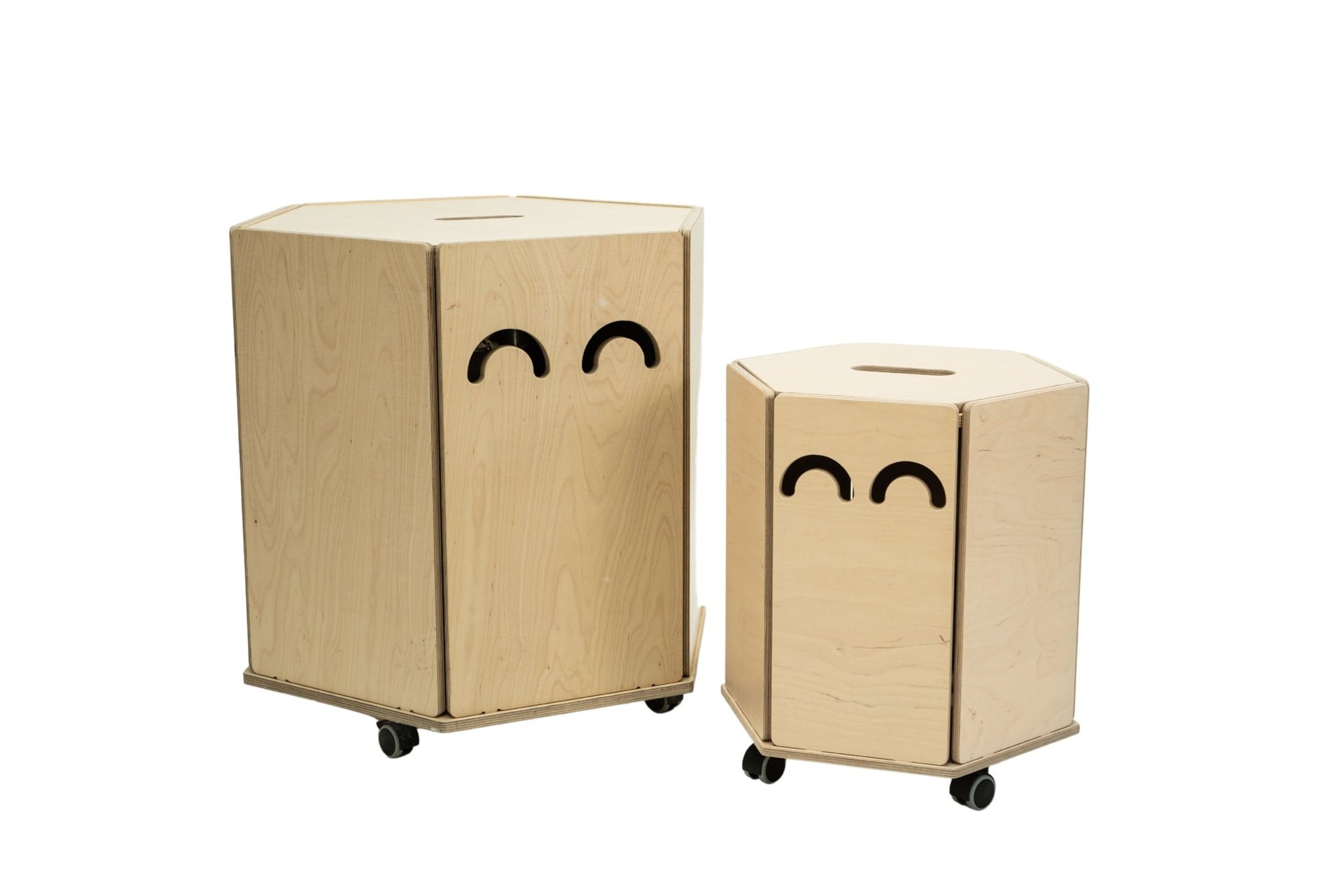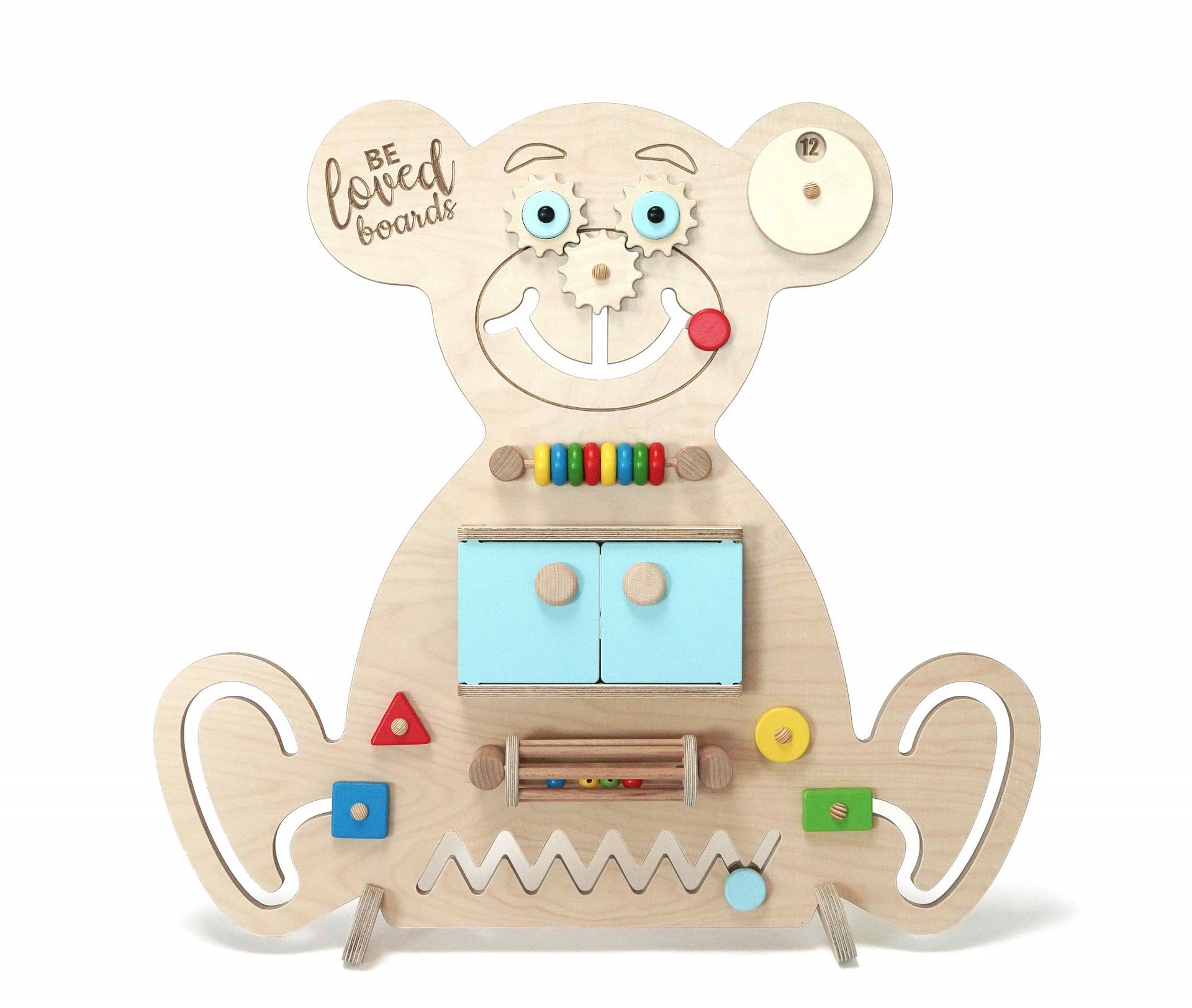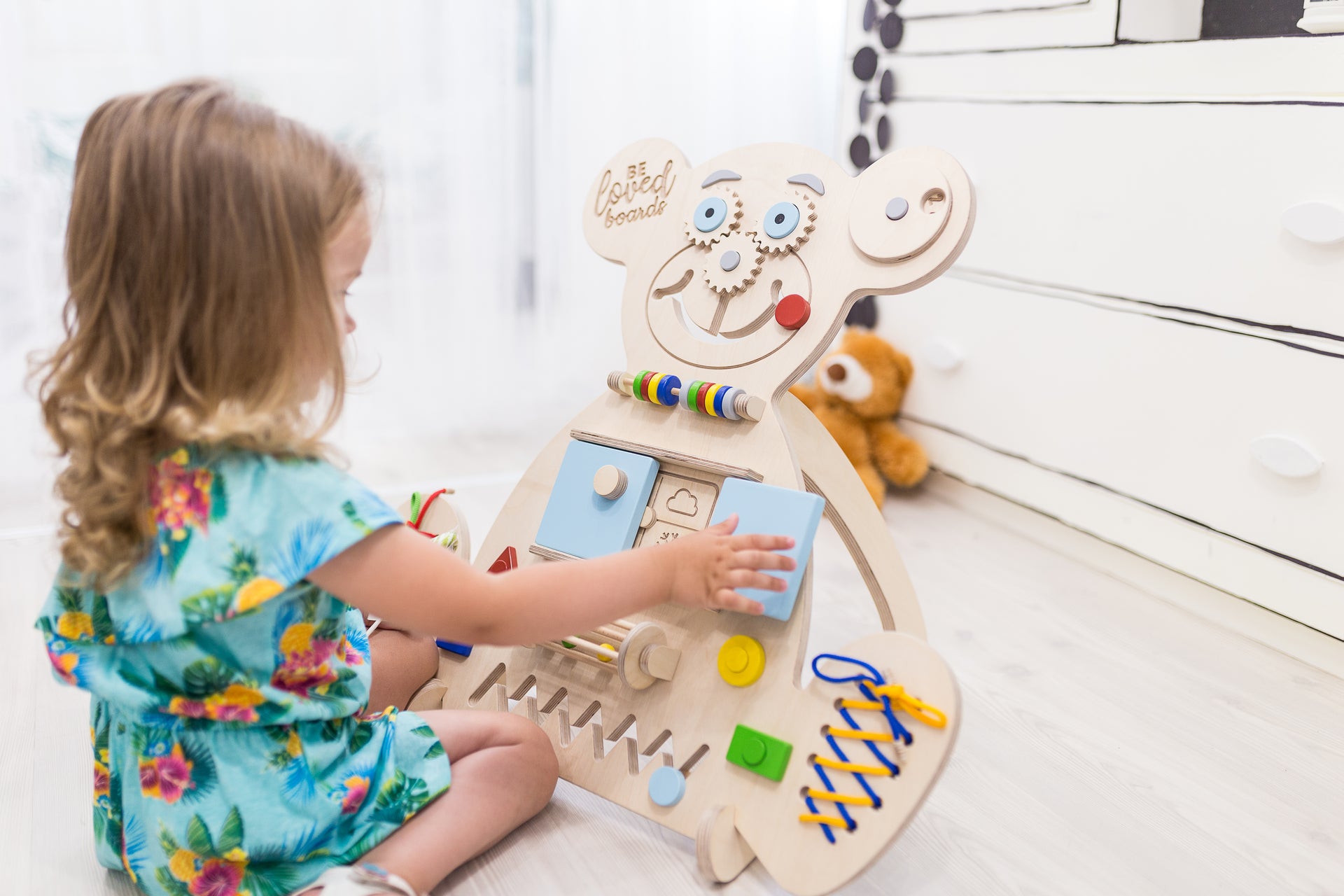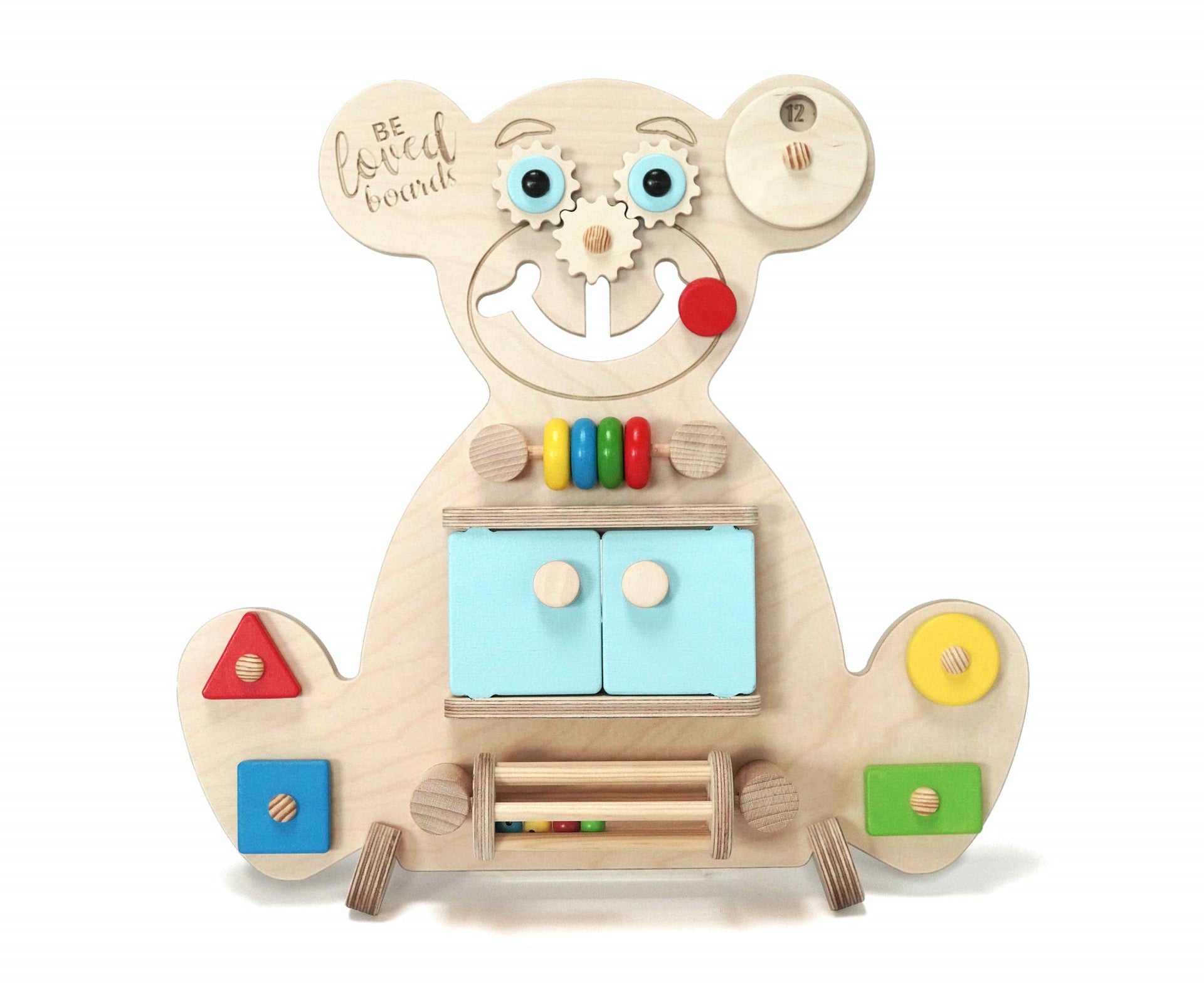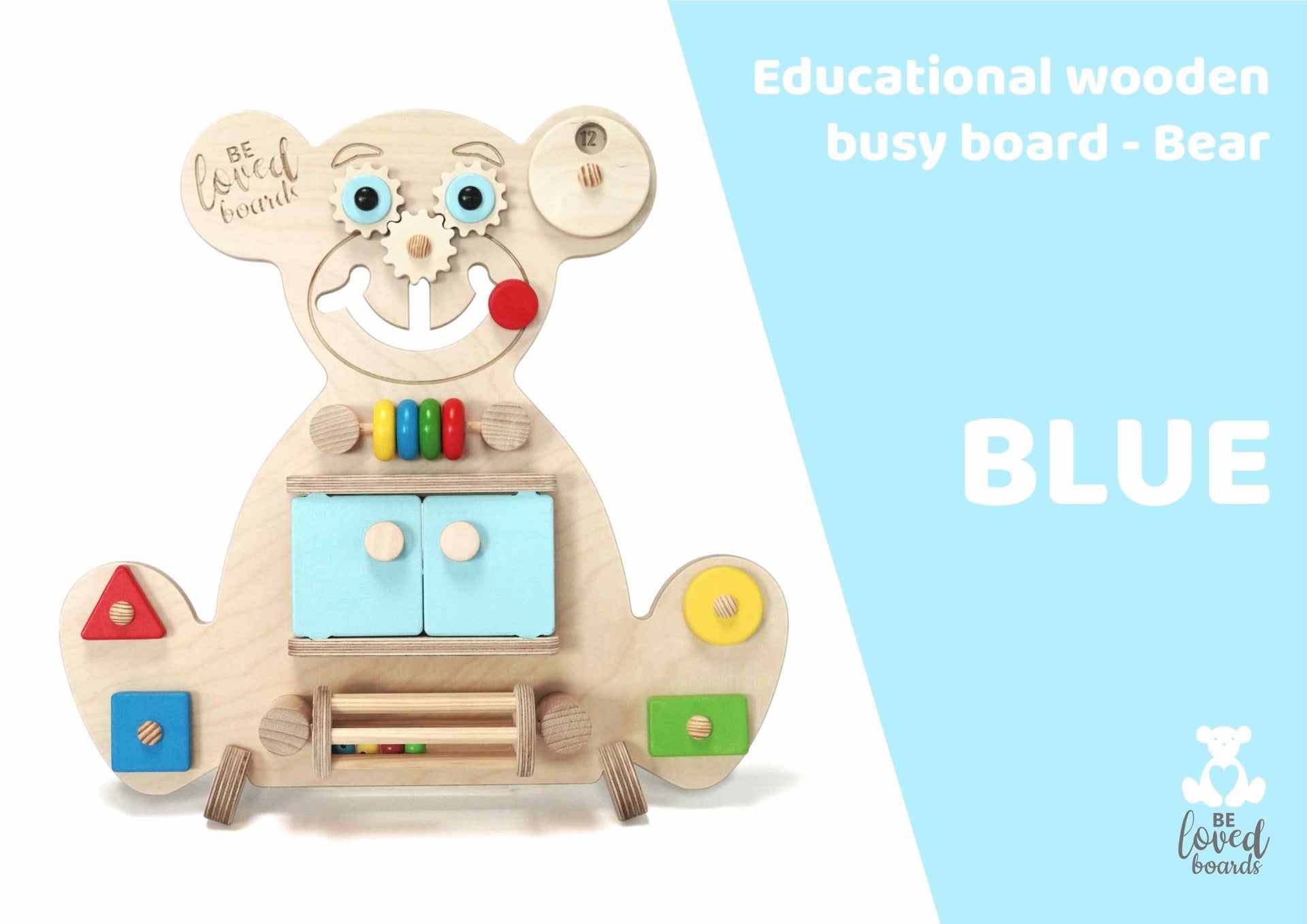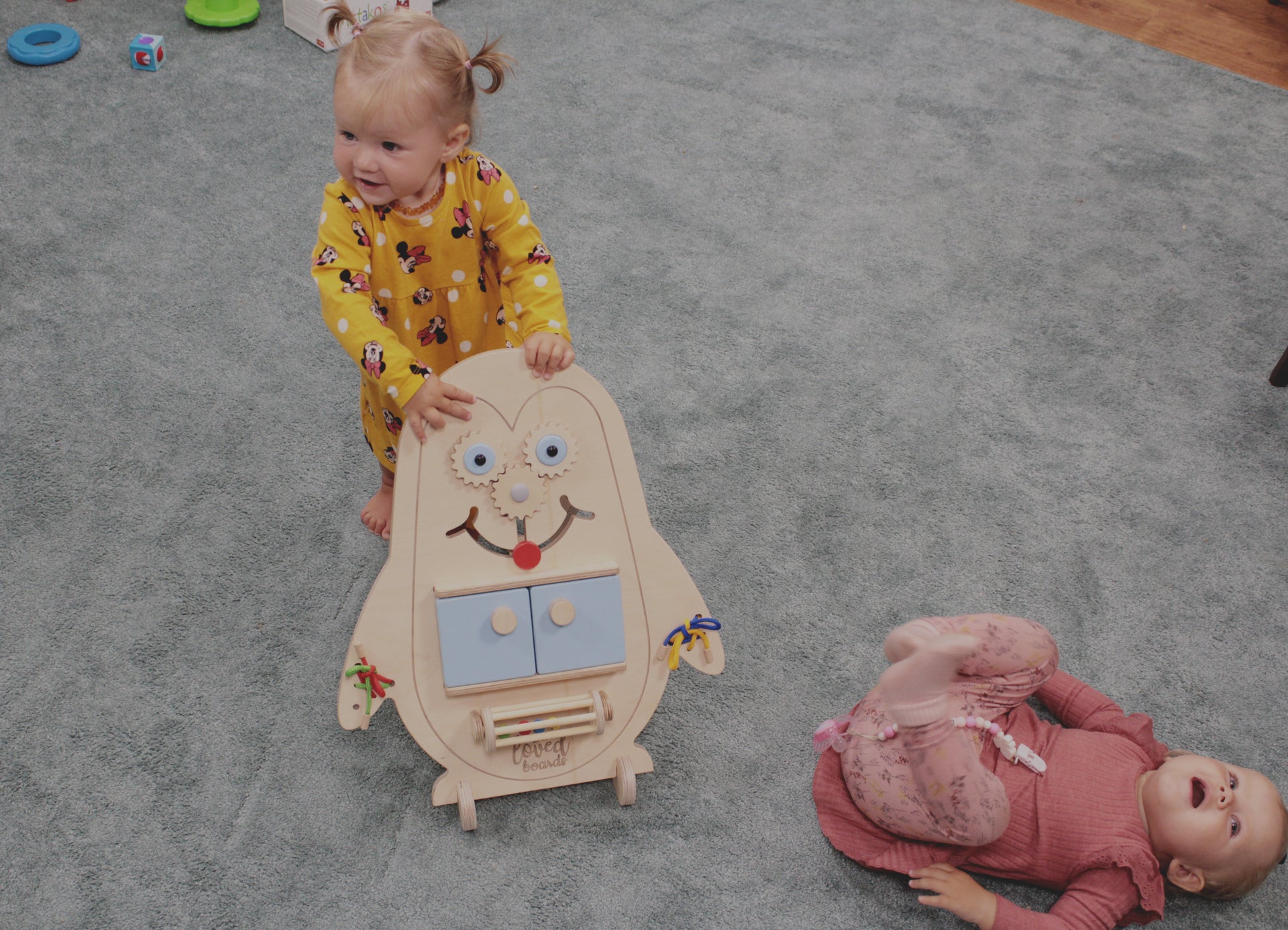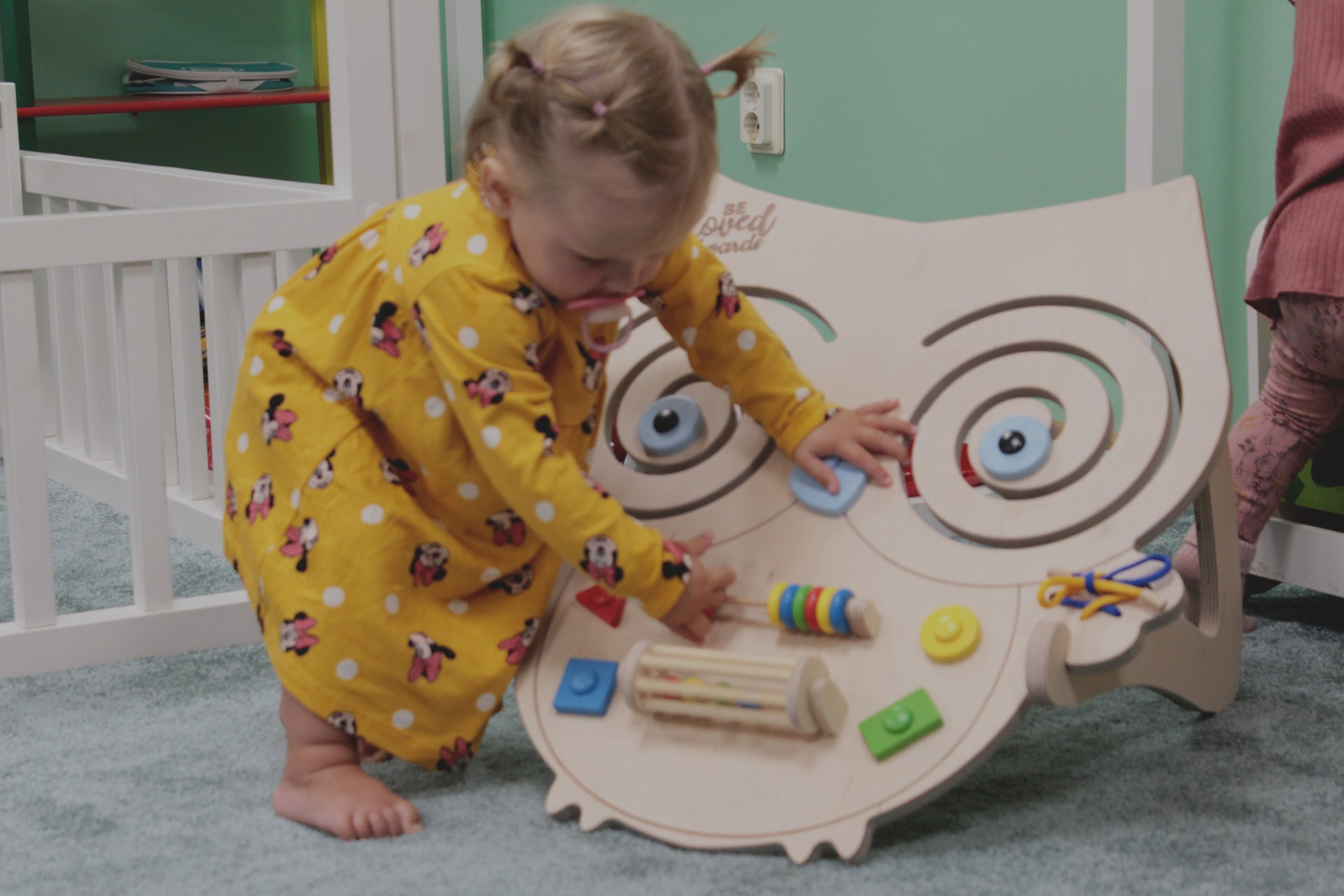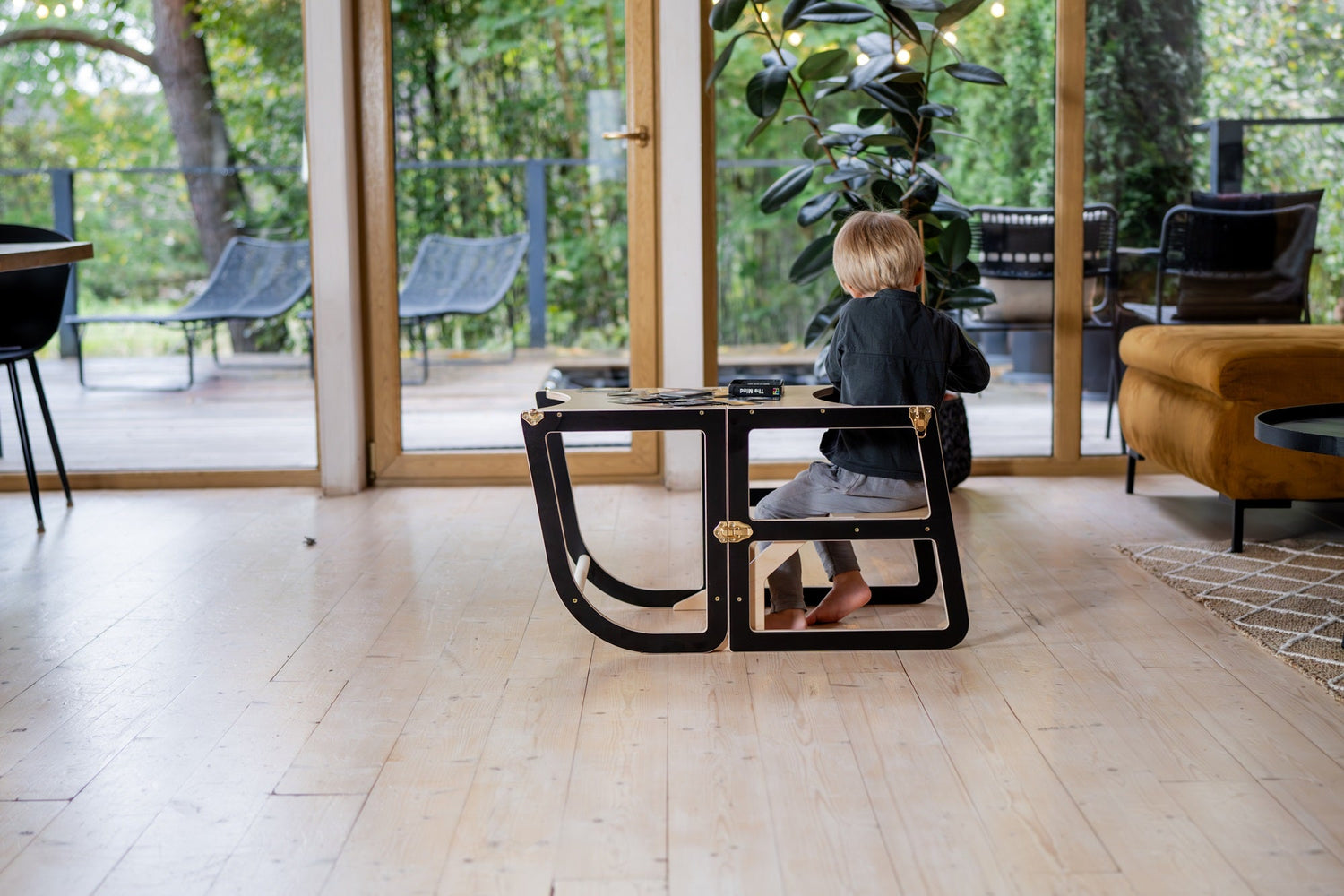
The Ultimate Guide to Choosing the Perfect Learning Tower for Your Child's Development
Are you looking for the perfect learning tower to support your child's development? Look no further! In this ultimate guide, we will help you navigate through the various options available to ensure you make an informed decision.
Choosing the right learning tower for your child is essential as it promotes independence, encourages learning, and enhances their overall development. Whether your little one is interested in helping you in the kitchen, or they want to reach for the stars on a craft project, a learning tower provides a safe and secure space for them to explore and learn new skills.
With so many learning towers on the market, it can be overwhelming to find the perfect one. That's why we're here to help. We've researched and compiled a comprehensive guide that covers everything you need to know about choosing the ideal learning tower for your child. From safety features and adjustability to design and versatility, we consider all the factors that matter most to parents.
Get ready to empower your child with the best learning tower that suits their needs. Let's dive in and find the perfect platform for their growth and development.
- Understanding the concept of a learning tower
Learning towers, also known as kitchen helpers or step stools, are versatile pieces of furniture designed to provide a safe and secure platform for young children to explore their surroundings and participate in various activities. These towers are typically made of sturdy materials, such as wood or metal, and feature a raised platform that allows children to safely reach countertops, tables, or other elevated surfaces.
The primary purpose of a learning tower is to encourage independence and hands-on learning for children, often in the kitchen or during creative play. By providing a stable and accessible platform, learning towers enable children to actively engage in tasks and activities that were previously out of their reach. This not only fosters a sense of accomplishment and confidence in the child but also promotes their overall development and learning.
Learning towers are designed to be adjustable, with features like height-adjustable platforms or removable steps, to accommodate the growing needs of the child. This ensures that the tower remains a useful and practical tool as the child develops and their physical abilities change over time. The versatility of learning towers allows them to be used in a variety of settings, from the kitchen to the playroom, making them a valuable investment for parents and caregivers.
- The benefits of using a learning tower for your child's development
Using a learning tower can provide numerous benefits for your child's development. One of the primary advantages is the enhancement of independence and self-confidence. By allowing children to safely reach and interact with their surroundings, learning towers empower them to take an active role in their own learning and exploration. This fosters a sense of accomplishment and self-reliance, which are crucial for a child's overall growth and well-being.
Another significant benefit of using a learning tower is the promotion of cognitive and motor skills development. When children are able to participate in activities at eye level, they are more engaged and attentive, leading to improved problem-solving abilities, hand-eye coordination, and fine motor skills. This hands-on learning experience helps children to better understand and retain new information, laying the foundation for future academic success.
Learning towers also encourage social-emotional development by providing a platform for children to collaborate, communicate, and interact with their caregivers or peers. When children are able to participate in shared activities, such as cooking or crafting, they learn valuable social skills, including cooperation, empathy, and conflict resolution. This, in turn, contributes to the development of strong interpersonal relationships and a positive self-image.
- Factors to consider when choosing a learning tower
When selecting the perfect learning tower for your child, there are several crucial factors to consider. Safety should be the top priority, as you want to ensure that your child can use the tower without the risk of injury. Look for towers with sturdy construction, non-slip surfaces, and features like safety rails or harnesses to keep your child secure.
Adjustability is another important factor, as you want a tower that can grow with your child. Look for towers with height-adjustable platforms or removable steps to accommodate your child's changing needs. This will not only extend the usable lifespan of the tower but also provide a comfortable and ergonomic experience for your child.
The size and footprint of the learning tower are also important considerations, especially if you have limited space in your home. Measure the area where you plan to place the tower and choose a model that fits comfortably without taking up too much valuable floor space. Additionally, consider the overall design and aesthetic of the tower, as it should complement the existing decor and blend seamlessly into your living environment.
- Different types of learning towers available in the market
When it comes to learning towers, there is a wide variety of options available on the market, each with its own unique features and benefits. One of the most popular types is the traditional wooden learning tower, which is known for its sturdy construction, classic design, and longevity. These towers often feature a simple, minimalist aesthetic that can blend in with a variety of home decor styles.
Another type of learning tower is the adjustable metal or aluminum model. These towers are typically more lightweight and portable, making them easy to move from one room to another. They often feature height-adjustable platforms and steps, allowing them to accommodate children of different ages and sizes.
For parents who prefer a more modern or contemporary look, there are also learning towers made of materials like acrylic or laminated wood. These towers can offer a sleek and stylish appearance while still maintaining the necessary safety and functionality. Some models even feature additional storage compartments or shelves, providing a practical solution for organizing kitchen or craft supplies.
Lastly, there are learning towers that incorporate additional features, such as built-in activity trays, chalkboards, or magnetic surfaces. These multifunctional towers can transform into engaging learning stations, encouraging children to explore and discover new skills through play-based activities.
- Safety features to look for in a learning tower
When it comes to choosing a learning tower for your child, safety should be the top priority. Look for towers that prioritize the well-being of your little one, ensuring they can explore and learn without the risk of injury. One of the most important safety features to consider is the stability and construction of the tower.
Sturdy, well-built towers with a solid base and sturdy side rails or guardrails are essential for providing a secure and stable platform for your child. These features help to prevent the tower from tipping or wobbling, reducing the risk of falls or accidents. Additionally, look for towers with non-slip surfaces on the steps and platform, as this can help to prevent slips and falls.
Another important safety feature to consider is the presence of safety harnesses or restraints. Some learning towers come equipped with adjustable harnesses that can be used to secure your child in place, providing an extra layer of protection. This is particularly useful for younger children or those who may be more active or adventurous during use.
Finally, pay attention to the materials used in the construction of the learning tower. Choose towers made from high-quality, non-toxic materials that are easy to clean and maintain. Avoid towers with sharp edges or small parts that could pose a choking hazard for curious little hands.
- How to set up and use a learning tower effectively
Setting up and using a learning tower effectively is crucial for ensuring your child's safety and maximizing the benefits of this versatile piece of furniture. Begin by carefully unpacking and assembling the learning tower according to the manufacturer's instructions, ensuring all components are securely in place and the tower is stable on the floor.
Once the tower is assembled, take the time to familiarize yourself and your child with its features and functionality. Adjust the height of the platform or steps to accommodate your child's current size and needs, and ensure that they can easily and safely access the top surface. Demonstrate how to safely step up and down from the tower, emphasizing the importance of using the handrails or steps.
When using the learning tower, always supervise your child closely and never leave them unattended. Encourage your child to hold onto the handrails or sides of the tower for added stability and security. Introduce activities and tasks that are age-appropriate and within your child's capabilities, gradually increasing the complexity as their skills and confidence grow.
Remember to regularly inspect the learning tower for any signs of wear or damage, and promptly address any issues to maintain its safety and longevity. By following these guidelines and using the learning tower as intended, you can create a safe and enriching environment for your child to explore, learn, and develop new skills.
- Reviews and recommendations of popular learning towers
When it comes to finding the perfect learning tower for your child, it can be helpful to explore reviews and recommendations from other parents and experts. One highly-rated option is the Guidecraft Kitchen Helper, a wooden tower that features a sturdy, adjustable design and a spacious platform for various activities.
Many parents praise the Guidecraft tower for its exceptional safety features, including a sturdy base, side rails, and a non-slip surface. The adjustable height allows the tower to grow with your child, ensuring a comfortable and secure fit as they develop. Reviewers also note the tower's versatility, with some using it not only in the kitchen but also for arts and crafts projects or as a step stool for reaching higher shelves.
Another popular choice is the Little Partners Learning Tower, which boasts a unique, open-sided design that provides a sense of security and freedom of movement for little ones. Parents appreciate the tower's adjustable height, as well as its durable construction and easy-to-clean surfaces. Many reviewers highlight the tower's ability to encourage independence and hands-on learning, making it a valuable investment for child development.
For families seeking a more modern and minimalist aesthetic, the Sprout Kids Learning Tower may be an excellent option. This acrylic tower features a sleek, transparent design that can seamlessly blend into a variety of home decors. Reviewers praise the tower's stability, safety features, and the way it allows children to feel connected to their surroundings while engaging in activities.
- DIY options for creating a learning tower at home
If you're feeling creative and want to customize a learning tower to suit your child's unique needs and preferences, consider exploring DIY options. Building your own learning tower can be a fun and rewarding project, allowing you to tailor the design, materials, and features to your specific requirements.
One popular DIY approach is to repurpose an existing piece of furniture, such as a sturdy step stool or a small side table, and transform it into a learning tower. This can involve adding safety features like handrails, adjusting the height, or incorporating storage compartments for supplies. By upcycling existing items, you can create a unique and cost-effective learning tower that reflects your personal style.
Alternatively, you can start from scratch and build a learning tower using basic woodworking tools and materials. There are numerous online tutorials and DIY guides that provide step-by-step instructions on how to construct a learning tower, including plans for different designs and skill levels. This approach allows you to customize the tower's size, shape, and features to perfectly suit your child's needs and your available space.
Whether you choose to repurpose an existing item or build a learning tower from scratch, the DIY route offers the opportunity to involve your child in the creative process. This can be a wonderful bonding experience and instill a sense of ownership and pride in your little one as they help to design and build their very own learning tower.
- Maintenance and care tips for your learning tower
Proper maintenance and care are essential for ensuring the longevity and safety of your child's learning tower. Regular cleaning and inspection can help to extend the tower's lifespan and keep it in top condition for your child's use.
Begin by wiping down the tower's surfaces with a damp cloth or mild cleaning solution, paying special attention to any areas that may accumulate dirt or food residue. Avoid using harsh chemicals or abrasive cleaners, as these can damage the tower's finish or materials. For wooden towers, consider using a wood-safe cleaner or a simple mixture of warm water and mild soap.
Regularly check the tower's stability and structural integrity, ensuring that all screws, bolts, and connectors are securely tightened. Look for any signs of wear or damage, such as cracks, splinters, or loose parts, and address them promptly to maintain the tower's safety. If any repairs are necessary, follow the manufacturer's instructions or consult a professional for guidance.
It's also important to store the learning tower properly when not in use. If possible, keep it in a dry, well-ventilated area, away from direct sunlight or excessive moisture, which can cause damage over time. Consider covering the tower with a dust-proof cover or storing it in a designated storage area to protect it from environmental factors.
By following these maintenance and care tips, you can ensure that your child's learning tower remains a safe, reliable, and long-lasting tool for their development and exploration. Regular upkeep will not only extend the tower's lifespan but also provide a secure and comfortable environment for your little one to learn and grow.
- Conclusion: Making an informed decision for your child's development
Choosing the perfect learning tower for your child's development is a crucial decision that can have a significant impact on their growth and well-being. By understanding the concept of a learning tower, the benefits it can provide, and the various factors to consider, you can make an informed choice that will support your child's exploration, independence, and overall development.
Whether you opt for a traditional wooden tower, an adjustable metal model, or a modern, multifunctional design, the key is to prioritize safety, adjustability, and versatility to ensure that the learning tower meets your child's current and future needs. By carefully reviewing the available options, considering the safety features, and understanding how to set up and use the tower effectively, you can create a safe and enriching environment for your child to thrive.
Remember, the learning tower is not just a piece of furniture, but a tool that can unlock a world of opportunities for your child. By investing in the right learning tower, you are empowering your little one to explore, learn, and grow in a secure and supportive environment. So, take the time to research, consider your options, and make an informed decision that will provide your child with the best possible platform for their development and success.

